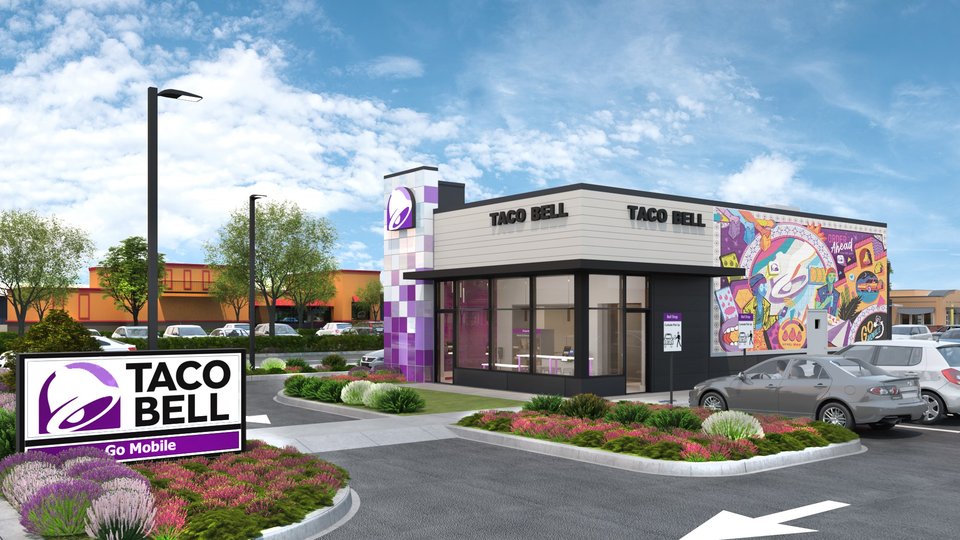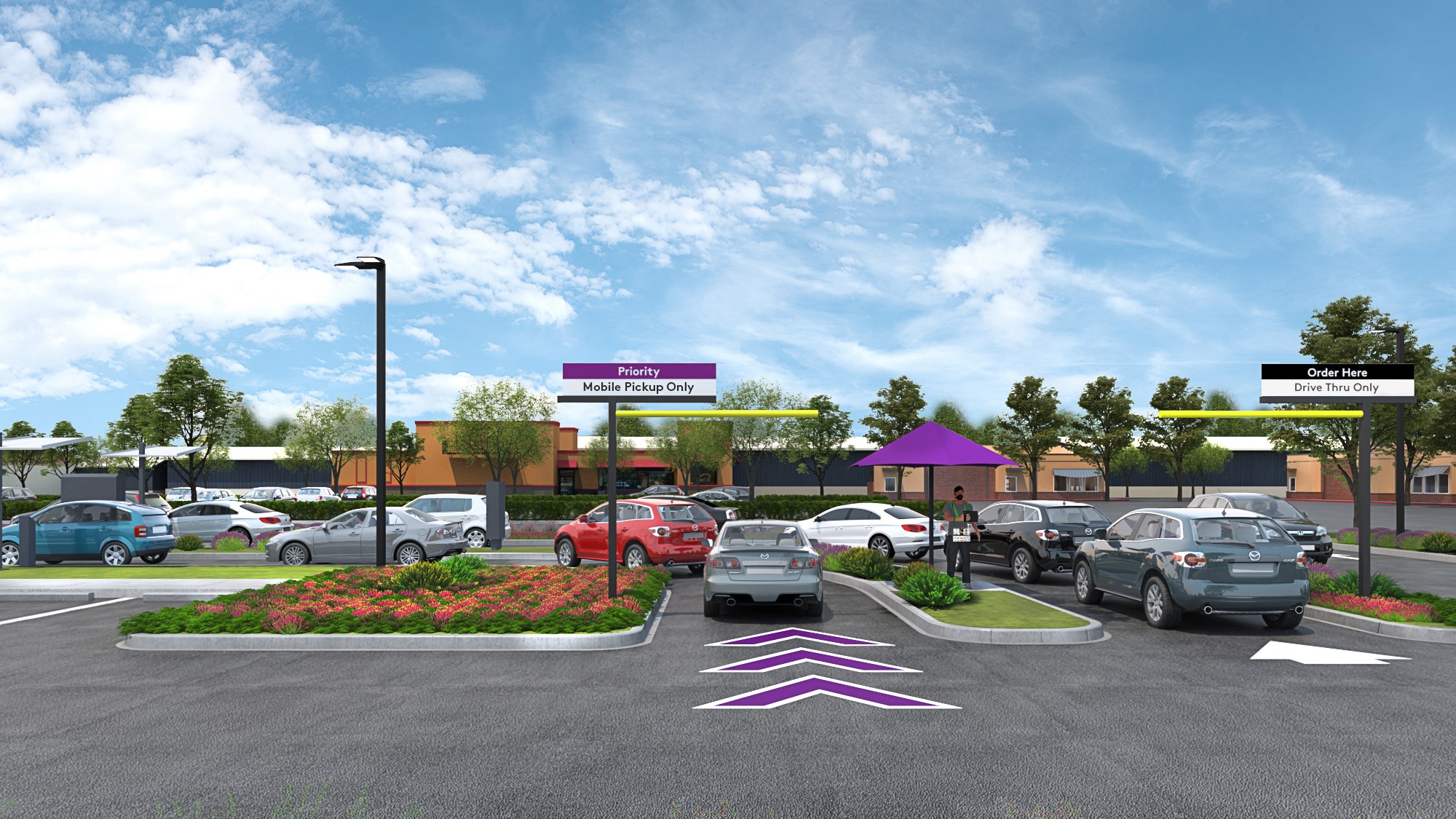Technology
Taco Bell rides 'Go Mobile' model to serve 1B drive-thru customers
If there are a couple of things we've learned over the past half-year, it's that drive-thru and digital restaurant ordering are here to stay. In this interview with Taco Bell COO Mike Grams, we learn how and why the brand launched a downsized restaurant design to capitalize on those trends.

August 28, 2020 by S.A. Whitehead — Food Editor, Net World Media Group
Editor's Note:This is the first of a two-part interview on Taco Bell's Go Mobile Restaurant model with COO Mike Grams.
One billion. That's the number of customers Taco Bell expects to serve in drive-thrus across its 6,500 U.S. stores from March 2020 to March 2021. If you're not impressed by that, you might be when you realize that over the same period from 2019 to 2020, the chain served just 680 million drive-thru patrons. That's slightly more than a 47% increase year-to-year.
 |
| Taco Bell COO Mike Grams.(Photo: File) |
That jump is part of the reason that the chain has thrown considerable heft behind its Go Mobile Restaurant design — a lean, mean, drive-thru sales-generating machine that QSRweb first told readers about last week.
The first physical Go Mobile stores will start springing up the first part of next year as 1,400-square-foot store locations, a bit smaller than the brand's standard 2,000-square-foot stores.
"All of it's designed to be convenient for the customer where they are at in the digital journey," Taco Bell COO Mike Grams said during in an interview with QSRweb. "Not everyone is native to mobile ordering and ordering ahead. So as the world shifts we will be in a position to shift with them, and we think over time, the digital business will continue to grow. It's very evident over the last three years that you just start to see a climbing use. So we feel the Go Mobile Restaurant will be the first expression where we put all of those elements together."
Taco Bell's approach to the customer experience is fluid; it goes with the forward-flow of technology and consumers' acceptance and use of it. That means in about six months, the chain will announce another iteration of its store designs. Or as Grams puts it, "The idea is to have a portfolio that is both flexible and convenient."
In this first of a two-part interview with the COO on Taco Bell's path into the future with its stores, we begin with some of the background Grams provided about the goals for the downsized, digital-and-drive-thru-heavy Go Mobile store model.
Q: When did the planning for the Go Mobile store begin and how has COVID-19 affected how the first stores come to life?
A: We started probably four or five years ago … trying to anticipate where the customer was going to move to and how do you position the experience to meet the customer. So many of the elements that you see coming up in the Go Mobile restaurant are ideas and then pieces that were in play, but the COVID environment created this urgency to just go faster. It was clear how the business model was changing and how we've got to change with it.
It includes the drive-thru but goes far more forward with the digital expression of that. So you move from a single-line drive-thru past with the menu board, to also a priority line pickup that allows customers who order online through the app to almost cut the line and not have to go through that menu board experience — which we know has always been a customer pain-points in navigating so many (menu) board choices.
And we added curbside, which is kind of an outcome of COVID … so a customer will have a choice. They can either choose the traditional drive-thru lane, priority pickup lane or pull to the door, where one of our bellhops will bring the order right out to them.
Q: What's the over-arching goal or goals with this model?
A: Our hope is with this digital Go Mobile restaurant that we provide that experience where we make it as easy as possible. Then, we want to give customers choices that are very easy and with our new loyalty program we can then reward people for the choice they make that's most convenient for them.
It's quite exciting because I think where the innovation comes in on this experience is putting all the pieces together and then you really have to synchronize it and make it as seamless as possible. We're certainly not there yet today, but I think as we evolve with these both flexible and convenient restaurants, we get ourselves into a position where we can just meet needs in the near future and it will continue to evolve as technology evolves with it.
Q: Is the Go Mobile model strictly a new-build store or will the brand retrofit current locations?
A: We're starting with new builds because the prototype is really where you test and learn really quickly. You test, you listen, you learn.
We will explore retrofits and we do believe there are going to be elements that we can retrofit these experiences. There are some parking lots and existing restaurants today where you could add the second lane and you can definitely do curbside. We're in that process right now, and you can imagine with 6,500 drive-thrus across the U.S., there are going to be places we can go in and retrofit. But there may be places we just need to build a new restaurant to help the existing one. It's moving really quickly.
Q: Speaking of moving quickly, what about that priority lane and how it will work to speed mobile app-placed order-ahead requests?
A: So the customer places their mobile order either online on the website or through the mobile device and as this evolves, you'll see the customer pull into the parking lot and they're immediately greeted with a, "Hello Mike! How are you?" And then, the idea is that we will be able to suggest what might be the fastest way for them to get that (order).
So, let me give you an example: If you have a family at home and you decide you want to feed everybody, that order could get quite large and being in the drive-thru might not be the most convenient way for us to deliver that. So we may then say, "Hey, if you pull into curbside, our bellhop can bring that right out." So that may be a really good alternative when you have four or five cars in that lane, for instance.
 |
| The new design's Priority Lanes are designed for order-ahead customers.(Photo provided) |
Q: But all these delivery lanes and channels require space and technology, so what are the special needs for this Go Mobile model as far as costs, space and even infrastructure are concerned as you select sites across the country?
A: Well, we were still learning what the cost will be. But just on the principles of it, the existing Taco Bell restaurant is roughly 2,000 square feet. This (Go Mobile) building you see on the renderings is around 1,400 square feet.
So there will be some offsets in the process, like technology, in some places, may cost a little bit more when you build that extra lane. But you're not having as much seating in the dining room … and you don't need as much guest parking and you might have a more narrow lot. … So it just gives you more flexibility and kind of opens up a few new windows for us that maybe we couldn't do before because our building was a standard 2,000 square feet and the dimensions of the parking lot ... had to be the same. …
We're really conscious of cost, but we're also really conscious of experience and balancing the needs of both. You certainly can't build restaurants that cost three times the norm. So, you know, we think there's some really good trade-offs … because the digital business is so profitable.
Q: Since flexibility has been stressed as essential to this new model, how important is extending that flexibility to the customer and franchisee, relative Go Mobile?
A: All of the science that we see behind the customer and control of the experience as benefits. Just imagine, with the mobile ordering experience, the order time alone gets removed from the process before (customers) ever show up in the parking lot.
So you're taking 30 to 45 seconds out of the process there, which allows you to get more cars through and makes the experience faster for the consumers. Those things all have financial benefits obviously, particularly during the peak times when you can increase your throughput and serve more customers. …
We also want to have a portfolio of restaurant options for franchisees that, if say, you go to the Northeast (U.S.), where population densities are much higher, you're going to see more (of the previously introduced urban walk-up style) Cantina restaurants for that foot traffic. But even then, we still have a terrific Long Island, New York business with drive-thru. So it's really again about that flexibility.
Editor's Note:The second half of this interview with Taco Bell COO Mike Grams on Sept. 1 on QSRweb, details about how the brand plans to get these potentially busier, more order-intensive Go Mobile restaurants to fire on all cylinders operationally. That includes everything from the technology that enables greater order speed and accuracy, to the staff and work protocols and marketing communications that drive it all home.
About S.A. Whitehead
Pizza Marketplace and QSRweb editor Shelly Whitehead is a former newspaper and TV reporter with an affinity for telling stories about the people and innovative thinking behind great brands.




